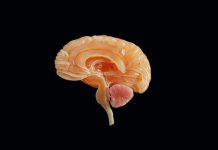
The Challenge of Detecting Alzheimer’s Early
Detecting and treating dementia, including Alzheimer’s disease, early remains a significant challenge in modern medicine.
Currently, certain proteins in the cerebrospinal fluid can indicate Alzheimer’s. However, biochemical tests, the standard detection method, can only confirm and quantify these proteins.
They can’t show the proteins’ original shape, which could provide crucial information about the disease stage.
A New Approach to Visualize Proteins
Now, a team from the Transport at Nanoscale Interfaces Laboratory at Empa and the Department of Neurology at the Cantonal Hospital in St. Gallen has used a method called atomic force microscopy (AFM) to visualize these Alzheimer’s-indicative proteins under near-real conditions.
Their results, published in Communications Biology, add a new dimension to understanding Alzheimer’s development and diagnosis.
The Power of Atomic Force Microscopy
AFM is a technology that brings the world of molecules into view with extraordinary precision. It allows researchers to observe morphological details in the nanometer range without damaging the proteins.
This technology enabled the team to analyze differences in size, structure, shape, and assembly patterns of protein accumulations directly in spinal fluid, establishing a link to disease stage.
Empa researcher Peter Nirmalraj explains, “While only short protein fibrils, about 100 nanometers in length, were found in people at an early stage of the disease, fibrils with multiples of this length—reaching several micrometers—appeared in later stages of the disease.”
In contrast, in cognitively healthy individuals, either no fibrils or shorter ones were present in the spinal fluid samples.
Implications and Future Research
Following these initial studies with 33 participants, the team plans to compare their lab findings with data from larger patient groups.
They also aim to gather information on the proteins’ chemical nature in body fluids.
The Dementia Research Synapsis Foundation Switzerland is supporting Nirmalraj to advance the ongoing study for early blood-based detection of Alzheimer’s disease.
Potential of AFM Technology in Alzheimer’s Diagnosis
Nirmalraj is optimistic about the potential of AFM technology in improving early detection of Alzheimer’s.
He believes that AFM can complement conventional biomarker tests by providing information on the morphological differences in protein aggregates, reflecting the disease’s progression.
Furthermore, this understanding could form the basis for the development of more effective drugs for Alzheimer’s.
If you care about Alzheimer’s, please read studies about the root cause of Alzheimer’s disease, and new non-drug treatment could help prevent Alzheimer’s.
For more information about brain health, please see recent studies about antioxidants that could help reduce dementia risk, and Coconut oil could help improve cognitive function in Alzheimer’s disease.
The study was published in Communications Biology.
Copyright © 2023 Knowridge Science Report. All rights reserved.



